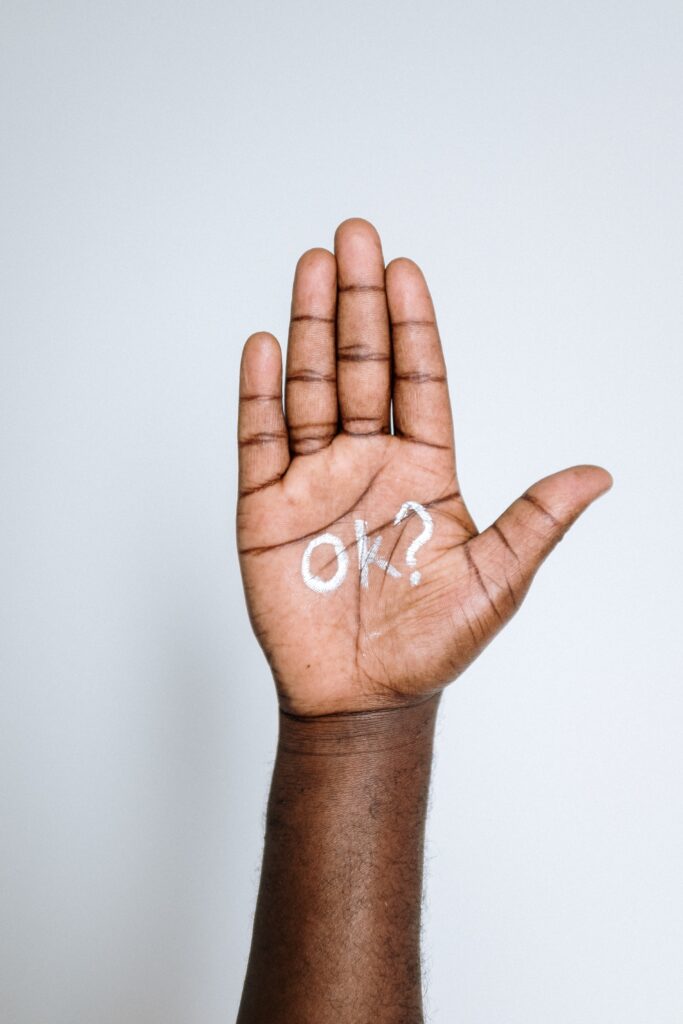Ask twice?

“Ask twice” was the key take-away message from Roman Kemp’s documentary Our Silent Emergency aired on Tuesday night. The programme followed Kemp’s attempt to make sense of the suicide of his friend Joe, and later on in the programme his own mental health problems, by talking to others bereaved by suicide. Throughout the programme silence was presented as a central barrier to recovery from suicidal thoughts and feelings; for Kemp, Joe had been one of his happiest friends, always up for a night out, never alerting those around him to any challenges or distress he was experiencing. This problem of silence, of not reaching out, of not wanting to talk about feelings, is presented as a particularly masculine problem, with Kemp questioning,
“Why are we losing so many men this way, and why aren’t they talking to their friends?”
In Kemp’s descriptions, he is clear that had he known how his friend was feeling and if his friend had felt able to talk to him, Kemp and others in his friend’s life could have intervened to prevent his suicide.
Is it that simple?

Switch over channels, and on Wednesday night Caroline Flack: Her Life and Death aired, telling a story of a suicide that in some ways was quite different from, and in some ways quite similar to, Kemp’s story.
Our Silent Emergency told a simple, coherent story of men (both Kemp’s friend and others) who were unable to share their suicidal distress with those around them, ending their lives without reaching out for help, and also without showing signs that anything was wrong. This construction of suicide as coming out-of-the-blue was then reinforced through the lack of examination of contributory factors throughout the programme, aside from cursory mentions of chemical imbalances from Shirley Kemp and socio-economic inequalities from Prof O’Connor. In contrast, Caroline Flack: Her Life and Death was a close examination of a complex range of contributors to Flack’s death as understood by her mum, sister, agent, and a few close friends. Through the telling of this story, an alternative to the ‘out-of-the-blue’ suicide of Joe was presented: it was clear that Flack’s distress was, to many, known, even if her plans to die by suicide were not.
Considering complexity…
Watching these documentaries side-by-side I was struck by a number of contrasts between the stories told. Both Flack and Kemp’s friend, Joe, were presented as happy, bright, game for a laugh, a good friend and ultimately unable to talk even to those closest to them about their suicidal thoughts. For Flack however, the fact that she had suicidal thoughts was not presented as unknown to those around her, even though often they were unspoken by Flack herself.
The stories told by Flack’s family and friends portrayed a complex interplay of factors leading up to her death. They described her as being obsessed with reading her bad press, motivated by a desperate need to be well thought of. This was exacerbated in the period following her arrest, as she awaited prosecution for the assault of her boyfriend, and lost her dream job on Love Island. She also experienced shame for her mental health, and in particular her self-harm, which became acutely distressing when photographs of her bedroom following self-harm on the night of her arrest were published without her consent in the newspaper. In the documentary these immediate circumstances were situated alongside stories of Flack as a woman who had struggled since childhood to look on the bright side, who had always been fascinated by suicide, and who had both before and after reaching fame found it “impossible” to cope with the breakdown of romantic relationships, having also attempted suicide in her youth after a break-up. It was clear from the accounts of those around her that although they might not have anticipated her suicide, it seemed to have been a possibility that they had worried about long before her death.

It’s good to talk?
In contrasting these accounts, I think we are able to reflect upon messages about the utility of talking to prevent suicide. On the one hand, I am heavily invested in wanting people to have more spaces to talk about their feelings and problems, and believe that no one should feel unable to reach out and talk about suicidal distress. On the other hand, I wonder how much the somewhat omni-present ‘it’s good to talk’ mantra perhaps over-simplifies suicide. Whether an individual’s suicidal distress is known or unknown, the factors contributing to feeling suicidal are incredibly complex and as a result I suggest it is highly likely that preventing those suicides will mirror this complexity.
This sense, both of the complexity of contributory factors to suicidal distress and of the complexity of preventing death by suicide was clearly communicated by both Flack’s mum and sister. When asked who was to blame for her death, her mother gave a number of examples of factors she believed were contributors: implicating the media, the Police, Flack’s boyfriend. Ultimately though, she concluded that Flack as an individual, the way she experienced her emotions and the ways in which she coped with difficulties was central. Similarly, when asked what she would like to say to Flack now, her sister replied that she simply did not know.
Caroline Flack: Her Life and Death closed in a less finished way to Our Silent Emergency: it did not give us an empowering take-away message or any tools to take forward into our own interpersonal relationships. Instead, it ended in a manner that was somewhat unfinished; perhaps more accurately reflecting just how complex it can be to know the right things to say or the right ways to help and be helped, and that although undoubtedly it can be good to talk, this cannot be viewed as a cure-all. Instead, there must be consideration given to further social and structural contributors to suicidal distress, which will be explored in my colleague Alex’s next blog here.



